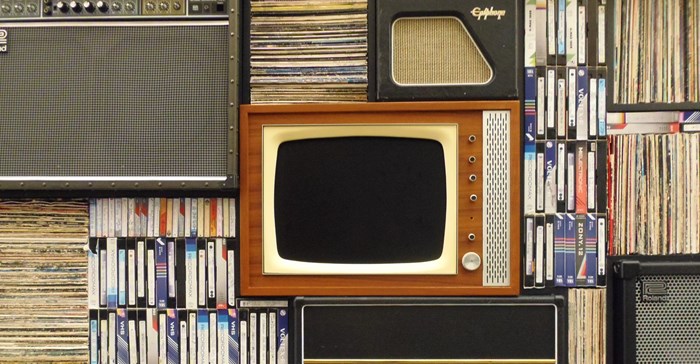
Image credit: Tracy Thomas on Unsplash.
Obviously, in this instance, they were talking about what makes some companies visionary and steadfast whilst others wither and die, but it’s an expression that could equally hold for the clash of advertising disciplines, specifically between the worlds of traditional and digital media.
Insofar as the ongoing debate of the pros and cons of various advertising media is concerned, there are invariably three different groups that hold distinct positions:
- The Tech Turks who tell us that digital is where it’s all at
- The Righteous Fundamentalists who insist that traditional advertising media is still the only way to go
- The Savvy Centrists who embrace the genius of the “and” and reject the tyranny of the “or”
As far as my position is concerned, I’d like to think of myself as a Savvy Centrist with a digital bent, and I’ll tell you why.
The traditional vs the digital
Tech Turks are far too quick to shout out slogans like “print is dead” or “old school advertising is no longer relevant”, their justification being that digital marketing delivers more results at a fraction of the cost and every aspect of the campaign is measurable down to a granular level – which is another problem in and of itself, but that’s a discussion for another day.
What they fail to mention is that traditional media such as TV, outdoor and print are far more effective than digital media in creating brand credibility. Most traditional media has the unique ability to graphically show and creatively shout out just how strong the relevant brand is.
There’s a basic rationale here.Even though the internet can be a scary place, any person who has just a modicum of digital skills is capable of posting an ad on Facebook or Gumtree. On the other hand, it is also fair to say that it is only those brands with a bit of substance and plenty of means who occupy media such as billboards, print or television.
Before the Righteous Fundamentalists get ahead of themselves, there’s a simple fact that they have to accept: In most cases, when done correctly, a digital marketing campaign will deliver optimal returns on marketing investment.
I say this with absolute confidence, not least of all because traditional media is incapable of providing accurate numbers when it comes to calculating a return on investment.
There is a lot more detail one could go into but it’s pretty obvious that the most effective way one should approach the conundrum of digital versus traditional is to embrace the glory of the ‘and’ do both, budget notwithstanding. I say this, not because I think it but, because I know it from practical experience.
The case for amplification
In an attempt to measure the effectiveness of a true “omnichannel” marketing approach, my team and I partnered with a Johannesburg-based advertising agency.
The basic objective of the exercise was to ascertain what “lift” or amplification a digital campaign could exert on entries to an existing competition running across a selection of traditional media channels for and on behalf of a well-known safety footwear brand.
The basic concept of the campaign was to drive entries via specific USSD (unstructured supplementary service data) strings linked to the different media channels, which included out-of-home billboards, transit TV, community radio, national newspapers and a selection of popular magazine titles.
We used the USSD method instead of an SMS call-to-action so that we could accurately report on the number of entries per province and limit the risk of duplicate entries by allowing each mobile phone number to only enter the competition once.
Execution
After an initial period of six weeks using only traditional channels, we deployed two different digital campaigns on Facebook, specifically targeting consumers who were most likely to see a single out-of-home billboard in Johannesburg and another in Cape Town.
Although the digital message and creative look was the same as the traditional advertisements, the digital campaign had the added advantage of allowing users to submit competition entries via a website instead of USSD.
Amplification results:
The following results are exclusively for USSD competition entries and exclude entries generated from online entry forms.
- The digital campaign targeting users likely to see the Cape Town billboard increased the weekly USSD entries by 91%.
- The digital campaign targeting users likely to see the Johannesburg billboard increased the weekly USSD entries by 73%.
It’s important to note that the average percentage of USSD entries per week for the non-amplified billboard in other provinces stayed the same or dropped.
The idea that digital marketing makes out-of-home and other traditional media channels irrelevant is simply nonsense – improved campaign performance results are achieved when digital is used to amplify these channels.
It is the job of digital to reinforce the traditional media messages and it does this incredibly well, allowing users to interact with a brand at a time and place that’s convenient for them to do so.
Digital provides intimacy whilst traditional media provides brand credibility.
There is a caveat, however.
La-Tasha Pucoe 28 Jun 2019 If you intend to use digital to amplify an existing traditional media campaign, it must be configured in such a way that each traditional media asset is amplified only to consumers who are most likely to see (or hear as in the case of radio) the asset. Failure to do this will give you skewed results.
All the statistics point to the fact that the most successful marketers of the future will be those who embrace the glory of the “and” by delivering messages across all marketing channels in an integrated approach.
In today’s world, consumers are moving seamlessly across all of the so-called “typical channel borders” – every second of every day. Big brands (meaning those that can afford it) should make sure that their marketing does the same. It’s a luxury smaller brands simply cannot afford and it’s powerful.







































